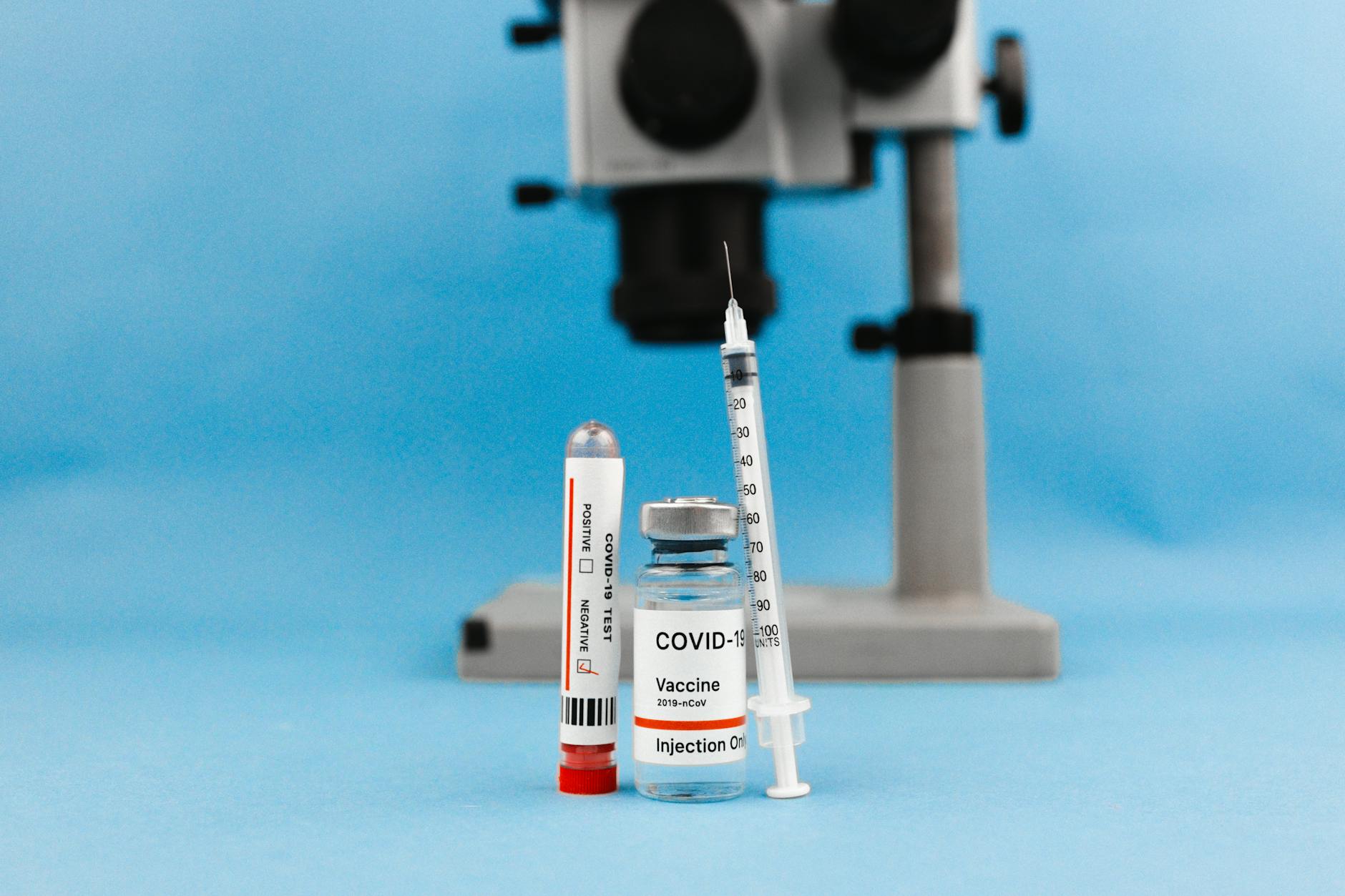Examining the Data: Vaccine Advisory Panels and Declining Conflicts of Interest
A closer look at a recent study reveals a trend of reduced conflicts of interest on critical public health committees, challenging recent public narratives.
Recent public discourse, amplified by prominent figures, has raised questions about the integrity of scientific advisory panels involved in vaccine policy. Specifically, claims have been made suggesting that these panels are rife with conflicts of interest, potentially compromising the objectivity of their recommendations. However, a recent study offers a contrasting perspective, indicating a significant decline in reported conflicts of interest among members of federal vaccine advisory committees in recent years. This article delves into the findings of this study, examining the context, analyzing the data, and exploring the implications for public trust in health guidance.
Context & Background
For decades, advisory committees have played a crucial role in shaping public health policy in the United States. These panels, composed of experts in various scientific and medical fields, provide recommendations to government agencies on a wide range of issues, from drug approvals to vaccination schedules. The National Vaccine Advisory Committee (NVAC), for instance, is a key body that advises the Secretary of Health and Human Services on vaccines and vaccine-preventive health. Its members are tasked with reviewing scientific data, assessing risks and benefits, and offering expert opinions to guide policy decisions that impact millions of Americans.
The composition and functioning of these committees have come under scrutiny at various times, particularly during periods of heightened public interest or concern regarding specific health issues. Concerns about potential conflicts of interest are not new. These can arise when committee members have financial ties to pharmaceutical companies, research institutions that receive funding from industry, or other entities that might have a vested interest in the outcomes of the committee’s deliberations. The potential for such conflicts to influence expert judgment is a perennial concern in scientific and policy-making bodies.
However, the nature and extent of these conflicts can evolve. Regulatory bodies and the committees themselves have implemented various measures over the years to manage and mitigate potential conflicts. These measures often include mandatory disclosure of financial interests, recusal from discussions or votes where a conflict exists, and stringent vetting processes for potential members. The effectiveness of these measures, and whether they are keeping pace with the evolving landscape of scientific research and funding, is a subject of ongoing discussion.
The current examination is particularly relevant in light of recent public statements by figures like Robert F. Kennedy Jr., who has been a vocal critic of vaccine policies and the institutions that set them. Kennedy has frequently asserted that the scientific and regulatory establishments, including vaccine advisory panels, are compromised by industry influence. These assertions often paint a picture of a system fundamentally beholden to financial interests, rather than public health imperatives. Such narratives, when widely disseminated, can erode public trust in scientific institutions and public health recommendations, potentially leading to reduced vaccine uptake or increased hesitancy.
It is within this broader context of public debate and scrutiny that the findings of the aforementioned study gain particular significance. By examining the actual reported conflicts of interest over time, the study provides an empirical basis for assessing the validity of claims about the pervasive influence of industry on these critical advisory bodies. Understanding this empirical data is essential for a balanced perspective on the functioning of these committees and the integrity of the policies they help shape.
In-Depth Analysis
The study in question, published by NBC News, analyzed data related to conflicts of interest among members of federal vaccine advisory panels. The core finding is a marked decline in reported conflicts of interest over several years, directly challenging the narrative that these panels are increasingly compromised by industry ties. The analysis specifically looked at data spanning a period of time that includes the tenure of various administrations and the evolution of disclosure policies.
The methodology employed by the study is crucial to understanding its conclusions. It likely involved a systematic review of publicly available disclosure forms submitted by committee members. These disclosures typically detail financial holdings, research grants, consulting roles, and other affiliations that could present a conflict of interest. By quantifying the number and types of disclosed conflicts year after year, the researchers were able to identify trends.
The study’s findings indicate that the number of committee members reporting financial conflicts of interest has been on a downward trajectory for a significant period. This suggests that the measures put in place to manage conflicts of interest, such as stricter disclosure requirements and vetting processes, may be having a tangible effect. It also implies that the pool of potential experts available to serve on these committees may increasingly be free from direct financial entanglements with the pharmaceutical industry.
One of the key aspects of the analysis would be to differentiate between types of conflicts. Not all conflicts are created equal. For example, a minor stock holding in a large, diversified pharmaceutical company might be viewed differently than direct financial ties to a company developing a specific vaccine under review. The study likely accounted for this nuance in its data aggregation and interpretation. Furthermore, the study would have considered the mechanisms by which conflicts are managed, such as recusal from voting on matters where a conflict is declared.
The significance of this trend lies in its direct counterpoint to common criticisms. When critics argue that vaccine advisory panels are inherently biased due to industry influence, they often rely on anecdotal evidence or the mere existence of potential conflicts. This study, by providing quantitative data on the actual reported conflicts, offers a more objective measure. It suggests that while the potential for conflict may always exist due to the nature of scientific research and funding, the reported incidence of these conflicts has decreased.
Furthermore, the study’s findings can be contextualized within the broader efforts of government agencies to enhance transparency and accountability in scientific advisory committees. Over the years, there has been a concerted push to make the workings of these bodies more accessible to the public and to ensure that decisions are based on robust scientific evidence, free from undue influence. The declining trend in reported conflicts could be seen as a positive outcome of these ongoing efforts.
However, it is important to consider the limitations of such studies. Disclosure forms rely on the accuracy and completeness of self-reporting. While there are mechanisms for verifying information, it is inherently difficult to detect all potential undisclosed conflicts. Moreover, the study’s timeframe is critical. A trend that spans several years might be interrupted or reversed. Therefore, ongoing monitoring and analysis are essential.
The implication of this research is that public perception, often shaped by vocal critics, may not align with the empirical reality of how these advisory committees are functioning in terms of declared conflicts of interest. This discrepancy highlights the challenge of communicating scientific processes and governance to the public in a clear and understandable manner, especially when faced with persistent, often emotionally charged, counter-narratives.
Pros and Cons
The findings of the study, suggesting a decline in conflicts of interest on vaccine advisory panels, present several advantages and also warrant consideration of potential limitations or counterarguments.
Pros:
- Enhanced Public Trust: A demonstrable reduction in reported conflicts of interest can bolster public confidence in the objectivity and integrity of scientific advice. When the public perceives that advisory panels are free from undue influence, they are more likely to trust the recommendations made by these bodies, including those related to vaccines. This trust is foundational for effective public health initiatives.
- Improved Decision-Making: With fewer members potentially swayed by personal financial interests, advisory panels can theoretically focus more purely on the scientific evidence, patient welfare, and public health outcomes. This can lead to more robust, evidence-based, and equitable policy decisions.
- Increased Transparency: The study’s findings likely stem from enhanced transparency in reporting mechanisms. This increased openness allows the public and watchdog groups to better scrutinize the composition and deliberations of these committees, fostering accountability.
- Attraction of Diverse Expertise: A commitment to minimizing conflicts of interest can attract a wider range of highly qualified experts who may have been hesitant to participate due to concerns about perceived or actual conflicts. This can enrich the deliberative process with broader perspectives.
- Alignment with Regulatory Goals: The trend aligns with the stated goals of regulatory agencies and government bodies to ensure that scientific advisory committees operate with the highest standards of impartiality and scientific rigor.
Cons:
- Potential for Undisclosed Conflicts: The study relies on self-reported data. While regulations are in place, there is always a possibility of undisclosed or overlooked conflicts of interest. It can be challenging to definitively prove the absence of all potential conflicts.
- Definition of “Conflict of Interest”: The interpretation and severity of what constitutes a “conflict of interest” can be subjective. The study’s classification of conflicts might not fully capture every nuance of potential bias, such as indirect financial support for research or reputational stakes.
- Industry Influence Beyond Direct Financial Ties: Even without direct financial conflicts, industry can exert influence through funding of research that may indirectly benefit certain companies, shaping the scientific discourse, or through strategic engagement with policymakers and thought leaders. These subtler forms of influence are harder to quantify in conflict-of-interest reports.
- Focus on Individual Conflicts vs. Systemic Issues: While individual conflicts are important, critics might argue that the study’s focus on reported conflicts of interest overlooks broader systemic issues within the scientific and pharmaceutical ecosystem that could still lead to biased outcomes. This could include pressure to publish positive results or funding structures that favor certain types of research.
- Lag in Reporting or Detection: There can be a lag between the occurrence of a conflict and its formal reporting or detection. Furthermore, the effectiveness of recusal policies depends on diligent implementation and monitoring.
- Perception vs. Reality: Even if conflicts are demonstrably low, a persistent public narrative of widespread bias can continue to influence public perception and trust. Changing deeply entrenched perceptions can be a separate challenge from addressing the factual existence of conflicts.
Key Takeaways
- Study Findings: A recent analysis indicates a significant and sustained decrease in reported conflicts of interest among members of federal vaccine advisory panels over recent years.
- Counter to Critical Narratives: These findings directly challenge claims suggesting that these committees are increasingly compromised by industry influence.
- Transparency Measures Likely Effective: The trend suggests that enhanced disclosure requirements, vetting processes, and conflict management strategies employed by government agencies may be yielding positive results.
- Importance of Self-Reporting: The reliance on self-reported data means that while the trend is positive, the complete absence of undisclosed conflicts cannot be definitively guaranteed.
- Broader Context of Influence: While direct financial conflicts may be declining, potential for more subtle forms of industry influence on scientific consensus and policy recommendations may still exist and warrants ongoing vigilance.
- Public Trust is Crucial: Demonstrating a commitment to impartiality through reduced conflicts of interest is vital for maintaining and rebuilding public trust in public health institutions and recommendations.
- Ongoing Monitoring Needed: The dynamic nature of scientific funding and research necessitates continuous monitoring and evaluation of conflicts of interest on these critical advisory bodies.
Future Outlook
The observed trend of declining conflicts of interest on vaccine advisory panels, if it continues, suggests a positive trajectory for the integrity of scientific advice in public health. However, the future is not guaranteed and will be shaped by several factors. Continued commitment to robust disclosure policies and rigorous enforcement will be paramount. This includes staying abreast of evolving funding mechanisms in scientific research and adapting conflict-of-interest guidelines accordingly.
One significant aspect will be how these bodies and the agencies that oversee them respond to ongoing public scrutiny. As public awareness of scientific processes and potential biases grows, there will likely be sustained pressure for even greater transparency and accountability. This could lead to further refinements in disclosure requirements, perhaps including broader definitions of what constitutes a conflict or more rigorous verification processes.
The landscape of scientific research and its funding is also dynamic. With the rise of new research methodologies, collaborations, and funding sources, advisory committees will need to continually reassess how potential conflicts are identified and managed. For instance, the increasing prevalence of large-scale data analysis and the involvement of technology companies in health research might introduce new types of conflicts that require specific guidelines.
Furthermore, the challenge of public perception will remain. Even with demonstrably low conflicts of interest, rebuilding trust among segments of the population that have become disillusioned with scientific institutions can be a long and arduous process. Future efforts may need to focus not only on the substance of scientific advice but also on the communication of the rigorous processes behind it, making complex scientific governance more accessible and understandable.
There is also the potential for legislative or administrative changes that could further strengthen conflict-of-interest regulations for advisory committees. As debates around scientific integrity and regulatory capture continue, policymakers may seek to implement more stringent measures to safeguard the impartiality of expert advice.
Ultimately, the future outlook depends on a sustained and proactive approach from all stakeholders—government agencies, committee members, researchers, and the public—to ensure that scientific advisory bodies remain independent, objective, and trusted sources of guidance for public health policy. The continuation of the observed trend will likely require vigilance, adaptation, and a steadfast dedication to the principles of scientific integrity.
Call to Action
The findings presented by this study offer a valuable insight into the current state of vaccine advisory panels. While the data suggests a positive trend in reducing conflicts of interest, maintaining and enhancing the integrity of these crucial bodies requires ongoing public engagement and institutional diligence. Therefore, we encourage the following actions:
- For the Public: Stay informed about the operations and findings of scientific advisory committees. Seek out credible, data-driven sources of information, such as peer-reviewed studies and official government reports, to form your understanding of public health issues. Engage in respectful dialogue and critically evaluate claims that lack empirical support. Support transparency in scientific governance by advocating for open access to information and data.
- For Policymakers and Agencies: Continue to prioritize and strengthen conflict-of-interest disclosure and management protocols for all scientific advisory committees. Regularly review and update these policies to address emerging challenges in scientific funding and research. Ensure clear and accessible communication about the processes and decisions of these committees to foster public trust. Consider mechanisms for independent verification of disclosures and for addressing potential conflicts that may not be captured by current reporting systems.
- For Researchers and Experts: Uphold the highest ethical standards in disclosing all potential conflicts of interest, and adhere to recusal guidelines when appropriate. Actively participate in advisory committees and contribute your expertise to ensure robust and evidence-based policy. Foster a culture of transparency and accountability within the scientific community.
- For Media: Report on scientific matters with accuracy and context, distinguishing between verified data, expert opinion, and speculation. Provide balanced coverage that includes the findings of studies like the one discussed here, offering empirical data to counter unsubstantiated claims. Clearly attribute sources and explain methodologies when reporting on scientific research.
By collectively supporting transparency, demanding evidence-based reasoning, and fostering informed public discourse, we can contribute to the continued effectiveness and trustworthiness of the scientific advisory processes that are vital for safeguarding public health.
Source: NBC News Article on Vaccine Panel Conflicts
U.S. Department of Health & Human Services: Advisory Committee Management
Centers for Disease Control and Prevention: Advisory Committee on Immunization Practices (ACIP)









